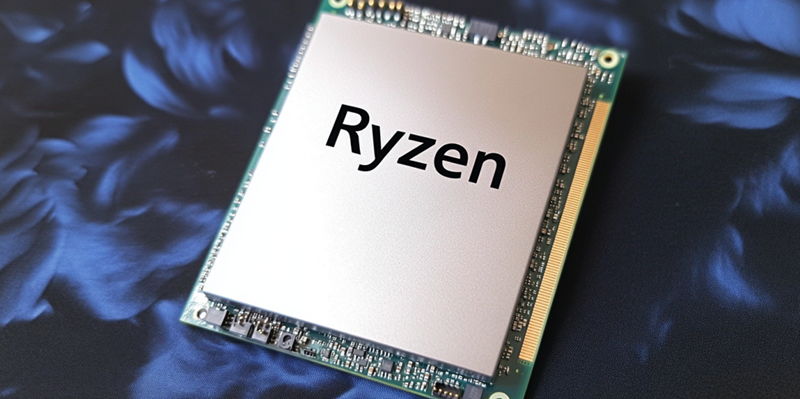In recent benchmarks, AMD’s latest Ryzen 7 9800X3D 3D V-Cache CPU has demonstrated impressive advancements in both single-core and multi-core performance metrics compared to its predecessor and competing Intel chips. The new processor has garnered significant attention due to its noteworthy improvements across various performance tests, positioning itself as a formidable contender in the CPU market.
Benchmark Results and Performance Boosts
The Ryzen 7 9800X3D CPU showcases an approximate 25% performance boost in both single-core and multi-core tests over its predecessor, the Ryzen 7 7800X3D. This remarkable increase in performance was demonstrated using the Geekbench 6.3 benchmark, paired with the ROG Crosshair X870E Hero motherboard with PBO (Precision Boost Overdrive) enabled. In these tests, the Ryzen 7 9800X3D achieved scores of 3339 in single-core and 18658 in multi-core benchmarks.
When compared to high-end Intel CPUs, such as the Core i7 and i9 from the Raptor Lake/Refresh series, the Ryzen 7 9800X3D shows performance on par in single-core tasks. Furthermore, it surpasses the non-X3D Ryzen 9000 Zen 5-based chips in multi-core performance, establishing itself as a top player in processor efficiency and capability.
Technical Specifications and Overclocking Potential
The technical prowess of the Ryzen 7 9800X3D is evident in its specifications. It features a base clock of 4.7 GHz and a boost clock of 5.27 GHz, with the potential to exceed these speeds when PBO is enabled. There have been reports of the CPU reaching over 5.6 GHz, showcasing its overclocking potential and capacity for enhanced performance under the right conditions.
An important aspect of this processor is its L3 cache, which remains at 96 MB, matching its predecessor. This large cache size plays a crucial role in modern gaming and CPU-intensive tasks, providing quicker access to frequently used data and improving overall efficiency.
Market Position and Power Efficiency
The Ryzen 7 9800X3D occupies a unique position in the market as the first X3D CPU to surpass its non-X3D counterpart in both single and multi-threaded performance. This makes it particularly suited for gaming and productivity purposes, where high performance and efficiency are paramount.
One of the standout features of the Ryzen 7 9800X3D is its superior power efficiency. The CPU remains around 60W during gaming loads, significantly lower compared to Intel’s higher consumption of up to 100W for similar performance levels. This efficiency not only reduces energy costs but also contributes to a cooler and more stable system, which is essential for prolonged gaming and heavy computing tasks.
Conclusion
In recent benchmarks, AMD’s Ryzen 7 9800X3D 3D V-Cache CPU has showcased remarkable improvements in both single-core and multi-core performance metrics. This impressive leap positions it ahead of its predecessor and competing Intel chips, underlining AMD’s persistence in pushing technological boundaries. The new processor has attracted significant interest due to its extraordinary enhancements observed in numerous performance tests. These tests highlight the CPU’s prowess in handling demanding applications, from gaming to content creation, making it a versatile option for power users. Furthermore, the 3D V-Cache technology employed by AMD grants the processor a unique edge, facilitating faster data access and improving overall efficiency. This advancement not only provides a competitive edge over Intel’s offerings but also indicates AMD’s dedication to innovation in the CPU market. Overall, the Ryzen 7 9800X3D is establishing itself as a formidable contender, making waves in the tech community and setting new standards for high-performance computing.

